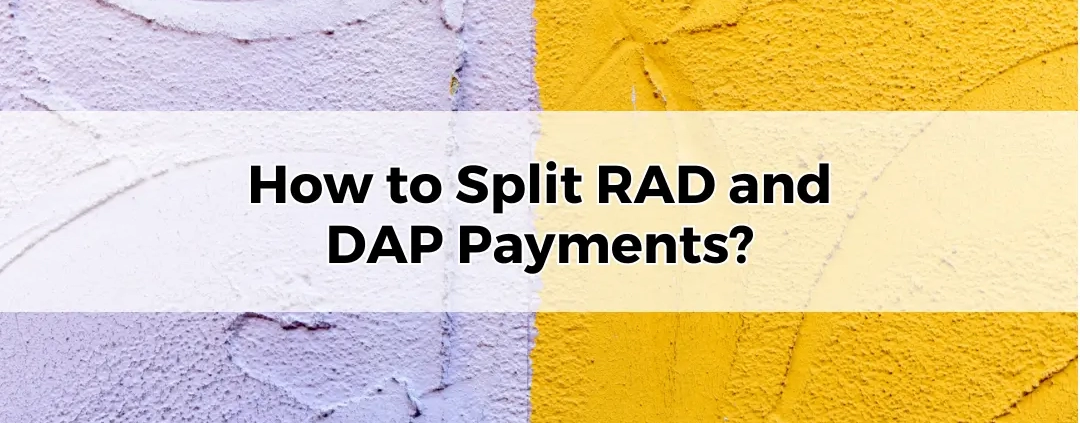How to Split RAD and DAP Payments?
Table of Contents
ToggleNavigating the financial landscape of aged care can be daunting, particularly when faced with complex payment options. Among these, the decision between a Refundable Accommodation Deposit (RAD) and a Daily Accommodation Payment (DAP) is crucial. Understanding how to effectively manage these payments can have a significant impact on both your finances and peace of mind. One strategy that has gained attention is the DAP from RAD approach, which involves splitting the RAD into a combination of RAD and DAP payments. This article delves into the mechanics of this strategy, its benefits and drawbacks, and whether it might be the right choice for your situation.
What Are RAD and DAP?
The RAD, or Refundable Accommodation Deposit, is a lump sum payment made to secure accommodation in a residential aged care facility. This deposit is refundable when the resident leaves the facility, subject to certain conditions. On the other hand, the DAP, or Daily Accommodation Payment, is a daily fee that covers the cost of accommodation without the need for an upfront lump sum. The DAP is calculated based on the unpaid RAD amount, and it offers an alternative to those who prefer not to part with a significant sum of money upfront.
How the RAD and DAP System Works
In the aged care system, residents have the option to pay for their accommodation either through a RAD, a DAP, or a combination of both. The RAD is essentially a loan to the aged care facility, which is returned to the resident or their estate upon leaving the facility. The DAP, meanwhile, is calculated daily and paid regularly, based on the interest rate set by the government. By combining both options, residents can manage their financial commitments in a way that suits their personal circumstances, offering a balance between liquidity and long-term financial security.
The DAP from RAD Strategy Explained
The DAP from RAD strategy involves splitting the RAD into a partial RAD payment and using the remaining balance to fund the DAP. For instance, instead of paying a full RAD of $500,000, you might pay $300,000 upfront as a RAD and use the remaining $200,000 to pay the DAP over time. This approach provides flexibility, as it allows you to retain more liquid assets while still covering the accommodation costs. The strategy is particularly beneficial for those who prefer to keep a portion of their wealth accessible, rather than tying it all up in the RAD.
Advantages of the DAP from RAD Strategy
One of the primary advantages of the DAP from RAD strategy is the flexibility it offers. By not committing the entire RAD upfront, you maintain greater control over your assets. This can be particularly useful in managing cash flow or covering other expenses that may arise. Additionally, this strategy can be advantageous for estate planning, as it allows more liquid assets to remain in the estate, potentially benefiting heirs. Moreover, if the facility’s RAD is expected to appreciate over time, the DAP payments may become more manageable, further enhancing the financial viability of this approach.
Disadvantages of the DAP from RAD Strategy
While the DAP from RAD strategy offers flexibility, it also comes with potential downsides. One significant drawback is the possibility of higher overall costs. The DAP is essentially an interest payment on the unpaid RAD, which means that over time, the total amount paid in DAPs could exceed the amount of the RAD. Additionally, the longer you stay in the facility, the more expensive this option can become. There’s also the risk that if your financial situation changes, the ongoing DAP payments could become burdensome, potentially leading to financial strain.
Who Should Consider the DAP from RAD Strategy?
The DAP from RAD strategy is particularly suited to individuals who value liquidity and want to retain access to their assets. It’s ideal for those who anticipate needing cash for other purposes, such as supporting a spouse, covering unexpected medical expenses, or investing in opportunities that may arise. Additionally, this strategy can be beneficial for families who wish to preserve a portion of their estate for their heirs. However, it’s not a one-size-fits-all solution, and it’s important to carefully consider your long-term financial needs and health prospects before committing to this approach.
Financial Considerations
When evaluating the DAP from RAD strategy, it’s essential to conduct a thorough cost-benefit analysis. This involves calculating the total amount that will be paid in DAPs over time and comparing it to the RAD amount that would otherwise be paid upfront. It’s also important to consider the impact on your estate and how the remaining RAD and DAP payments will be funded. Additionally, the interest rate applied to the DAP can fluctuate, potentially increasing the cost over time. Therefore, understanding the financial implications and planning accordingly is crucial to making an informed decision.
Tax Implications of the DAP from RAD Strategy
The DAP from RAD strategy has several tax implications that should be considered. While the RAD itself is not subject to tax, the income generated from the assets retained by not paying the full RAD could be taxable. For example, if you invest the retained funds, any income or capital gains derived from those investments may be subject to income tax. It’s also important to consider how the DAP payments will affect your overall taxable income, as this could have implications for your tax liability. Consulting with a tax professional can help you navigate these complexities and optimise your tax position.
Impact on Pension Entitlements
The way you structure your RAD and DAP payments can significantly impact your Age Pension entitlements. The RAD is considered an exempt asset for pension purposes, meaning it doesn’t count towards the asset test. However, the amount retained to pay the DAP is counted as an asset and could reduce your pension entitlements. Additionally, the income generated from the retained assets may be assessed under the income test, further affecting your pension. Careful planning is required to balance the benefits of the DAP from RAD strategy with the potential impact on your pension.
Alternatives to the DAP from RAD Strategy
While the DAP from RAD strategy offers certain advantages, it’s not the only option available. Alternatives include paying the full RAD upfront, which may reduce overall costs if you plan to stay in the facility for an extended period. Another option is to pay the entire accommodation cost as a DAP, which maximises liquidity but could result in higher long-term costs. Each option has its own set of benefits and drawbacks, and the best choice will depend on your individual financial situation, health status, and personal preferences.
Making the Right Decision
Choosing the right payment strategy for aged care is a deeply personal decision that requires careful consideration of a range of factors. It’s essential to weigh the short-term and long-term financial implications, consider the impact on your estate and inheritance plans, and understand how your choice will affect your pension and tax obligations. Engaging with a financial adviser who specialises in aged care can provide invaluable guidance and help you make a decision that aligns with your financial goals and personal circumstances. Ultimately, the right strategy will balance financial prudence with the need for quality care and peace of mind.









